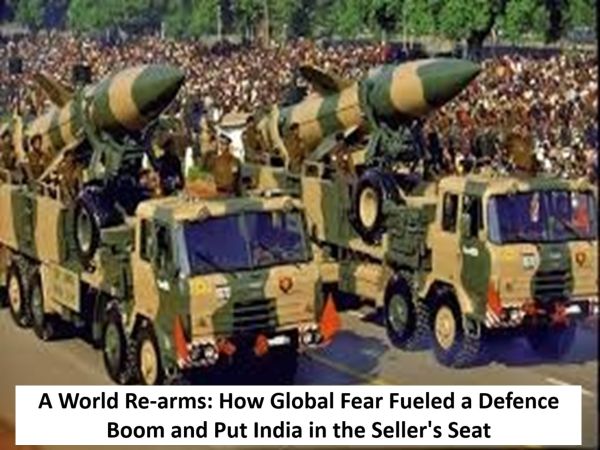

A chill has settled over the globe, and nations are responding by opening their wallets. From the battle-scarred plains of Eastern Europe to the tense waters of the South China Sea, a new global arms race is gathering pace. Spurred by active conflicts and growing geopolitical anxieties, countries are pouring unprecedented sums into military hardware, creating a defense boom that is reshaping the world order.
In Europe, the shadow of Russia’s war in Ukraine looms large. NATO members are scrambling to meet the alliance’s target of spending 2% of their GDP on defense. Germany, in a historic reversal of its post-WWII policy, has initiated its “Zeitenwende” (turning of an era) with a €100 billion fund to modernize its military. Poland, on the front line of the tension, has gone on a shopping spree, buying everything from American Abrams tanks to South Korean howitzers, positioning itself as a new European military powerhouse.
Meanwhile, in Asia, the driving force is the rising assertiveness of China. Japan is shedding its pacifist constraints to build a more robust defense capability. Nations like the Philippines and Vietnam, feeling the pressure in the South China Sea, are actively seeking new weapons and partners to secure their maritime interests.
This surge in demand has been a bonanza for the world’s traditional arms dealers. The United States remains the undisputed king, with giants like Lockheed Martin and Raytheon seeing order books swell for high-tech gear like the F-35 fighter jet. But new players are aggressively carving out their own space. South Korea has emerged as a surprisingly potent exporter, winning major contracts with its high-quality, cost-effective K2 tanks and K9 howitzers. Turkey, too, has become a major force, with its Bayraktar drones changing the face of modern warfare.
But the most fascinating twist in this global story is the arrival of a new, unexpected player at the seller’s table: India.
For decades, India was one of the world’s largest importers of military equipment, heavily reliant on Russia, France, and Israel. Now, in a seismic shift driven by its “Make in India” and “Aatmanirbhar Bharat” (self-reliant India) campaigns, the nation is aggressively pivoting to become a major arms exporter.
The crown jewel of India’s export catalog is the BrahMos supersonic cruise missile, one of the fastest in the world. A landmark deal has already been signed to supply these missiles to the Philippines, giving the country a credible deterrent in the South China Sea. Vietnam and other Southeast Asian nations are also showing keen interest. Beyond missiles, India is marketing its indigenous Tejas fighter jet, Pinaka rocket systems, and a range of other military hardware.
This isn’t just about economic ambition; it’s a profound strategic realignment. By arming its neighbors, India is stepping into the role of a regional security provider and offering a non-Western alternative for nations wary of becoming pawns in the US-China rivalry. As the world re-arms, India is making a bold play to not just defend itself, but to help others do the same.
Read More: Espionage in Prague: Czech Intelligence Foils Suspected Chinese Plot to Crash Taiwanese VP’s Motorcade